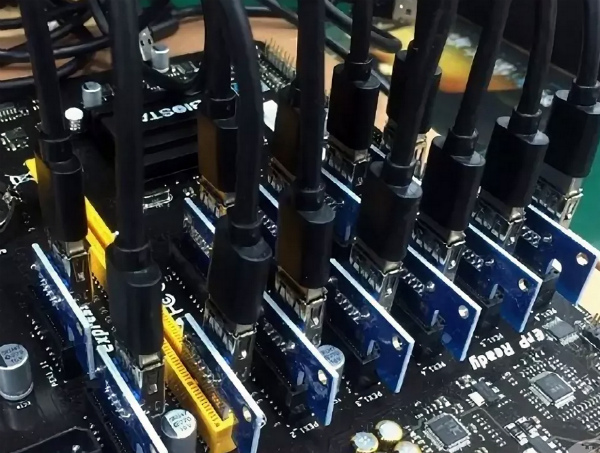Python bitcoin miner
Contents
How it works
As cryptocurrencies approach mainstream adoption and recognition, more and more people are searching for alternative and convenient ways to mine bitcoins. At present, there is plenty of bitcoin mining software or miners on the Internet. You can find suitable software for any hardware and any operating system. Let’s dive into how it works.
Bitcoin mining is the backbone of the bitcoin network with the following functions:
- Issuing of new bitcoins
- Confirming transactions
- Security
In general, bitcoin mining software collects a list of active transactions and then groups them together in a block. Next, it hashes it, which is the representative of the transactions. After that, the mining software converts this into a binary format – a block header, which references the previous blocks. This is called a chain. The further step is the change to the small piece of this block – a nonce. Then, the software tests if the block header hash is less than the target. The target is compressed and stored in each block in a field “bit.”

What is the best Python bitcoin software
There are lots of UI-based and command-based bitcoin miners. One of the most efficient implementations of bitcoin miners on Python is Pyminer. This is a ‘getwork’ CPU mining client for bitcoin. This Python software can be found here: https://github.com/jgarzik/pyminer
How to code the simplest Bitcoin CPU miner
If you want to write your first bitcoin miner on Python, you need to have a computer, which can run a Python programming environment. As well, some basic knowledge of Python and the ability to run commands from a command-line program are a must-have.

So, here are the key steps of writing your Python bitcoin miner:
- Install Python on your computer from https://www.python.org/.
- Install bitcoin Python library for bitcoin signatures and transactions.
Here you can find a simple, common-sense Bitcoin-themed Python ECC library: https://github.com/vbuterin/pybitcointools
In this library you can find the functions, which have a simple interface, inputting and outputting in standard formats, and can be used individually. As well, this library supports binary, hex, and base58, and allows to execute and publish a transaction in a command line.

Here is the listing of the main commands: https://pypi.org/project/bitcoin/.
After you have installed Python, execute this command in the command line program to install the bitcoin Python library:
pip install bitcoin
- Generate a private key
Open MS Word or Notepad, or any other text editor, and type this code to import the bitcoin library. After that, generate a private key using the function random_key.
from bitcoin import *my_private_key = random_key()print(my_private_key)Save it as a .py file and then open your command line program and run the above program like this.python <program location and name>
- Generate a public key
Pass the generated private key to the function privtopub.
from bitcoin import *my_private_key = random_key()my_public_key = privtopub(my_private_key)print(my_public_key
- Create a bitcoin address
Pass the generated public key to the function pubtoaddr.
from bitcoin import *my_private_key = random_key()my_public_key = privtopub(my_private_key)my_bitcoin_address = pubtoaddr(my_public_key)print(addr)
- Create a multi-signature address
This is an address associated with more that one private key. We start by creating 3 private keys and 3 public keys. Subsequently, we create a multi-signature by passing the 3 public keys to the function mk_multisig_script. Eventually, we create a multi-signature bitcoin address by the passing our multi-signature to the function scriptaddr.
from bitcoin import *my_private_key1 = random_key()print(‘Private Key 1: ‘ + my_private_key1)my_public_key1 = privtopub(my_private_key1)print(‘Public Key 1: ‘ + my_public_key1)my_private_key2 = random_key()print(‘Private Key 2: ‘ + my_private_key2)my_public_key2 = privtopub(my_private_key2)print(‘Public Key 2: ‘ + my_public_key2)my_private_key3 = random_key()print(‘Private Key 3: ‘ + my_private_key3)my_public_key3 = privtopub(my_private_key3)print(‘Public Key 3: ‘ + my_public_key3)my_multi_sig = mk_multisig_script(my_private_key1, my_private_key2, my_private_key3, 2,3)my_multi_address = scriptaddr(my_multi_sig)print(‘Multi-Address: ‘ + my_multi_address)
- View address transaction history
Pass a valid bitcoin address to the function history.
from bitcoin import *print(history(a_vaid_bitcoin_address))

Whapping up
The cryptocurrencies have been receiving excessive attention in the past several years. This led to the appearance of miners – people who are granted transaction fees within the block they broadcast to the network in addition to new bitcoins, as an incentive. A miner who publishes a block before anybody else is rewarded. Miners use bitcoin mining software, and, having some fundamental Python skills, you can write a simple Python bitcoin miner by yourself.





